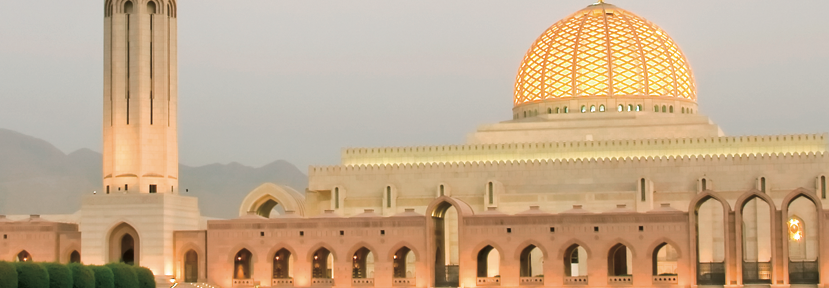Stronger oil prices offset lower energy production in Oman, as the government moved to accelerate fiscal reforms and broaden its revenue base.

Oil output fell 3.7% year-on-year (y-o-y) in the first 10 months of 2017, with production averaging 970,000 barrels per day (bpd), down from 1m bpd in the same period of 2016. However, an improvement in average prices saw oil earnings rise 32%, according to the National Centre for Statistics and Information (NCSI).
Bolstered by a 10.7% increase in gas revenues to October, the higher hydrocarbons earnings helped Oman narrow its budget deficit to OR3.2bn ($8.3bn) by the end of October, down from OR4.8bn ($12.5bn) in the same period the previous year.
The year-end deficit is expected to reach OR3bn ($7.8bn), according to forecasts from the 2017 budget, down from OR5.3bn ($13.8bn) in 2016 and on a par with projections for 2018.
Oil production contribute to flat growth
Despite state revenue rising by 19.2% y-o-y over the first 10 months of the year, Oman’s GDP growth is expected to fall by around 2.7 percentage points to 0.1% over the course of the year, pushed down by cuts in oil production.
In its economic outlook for 2017, issued in October, the World Bank forecast Oman’s real GDP growth would slow from 2.8% in 2016 to 0.1%. Non-hydrocarbons growth is also expected to ease, slipping from 3.4% to 2.5% on the back of lower public spending, and the knock-on effects of falling consumption and a decline in investment.
The IMF, meanwhile, anticipated flat growth of 0% for Oman in its regional outlook report, also released at the end of October. However, it added the economy was set to rebound in 2018 on growth in both the oil and non-oil economy; GDP is forecast to expand by 3.7%, well above the GCC average of 2.9%.
Inflationary pressures remained subdued during 2017, even though higher oil prices pushed up transport costs, and cuts in government subsidies led to a rise in the price of water and electricity. Average annual inflation was measured at 1.6% in January-October, according to the central bank.
Tax reforms to broaden revenue base
The last year saw the government take steps to generate new avenues of income by reforming Oman’s tax system.
Introduced in February, the changes included an increase in corporate tax from 12% to 15%, and the withdrawal of the OR30,000 ($78,000) tax-free ceiling. A 3% income tax was also implemented for certain small-scale taxpayers, while the 10% withholding tax was extended to encompass dividends, interest and payments for services.
The government hopes the new taxes will generate an additional OR125m-250m ($325m-650m) per year, although some analysts feel the measures could deter investors.
“The introduction of withholding is negative for banking. The sector now pays taxes on interest payments and fees paid to overseas banks, which local banks tap for liquidity from time to time,” Lloyd Maddock, CEO of Ahlibank, told OBG. “However, the increase in the corporate tax rate from 12% to 15% is still internationally competitive, and manageable.”
Challenges weigh on credit ratings
The downturn in the economy also had an effect on the country’s credit ratings. In early November ratings agency Standard & Poor’s (S&P) lowered Oman’s long-term foreign and local currency sovereign credit rating from “BB+” to “BB”, citing continued dependence on hydrocarbons as a key factor.
The move came four months after Moody’s lowered its long-term bond rating from “Baa1” to “Baa2” due to concerns over structural vulnerabilities.
While reflecting some of the challenges facing the country, the S&P downgrade could spur the government to improve the investment climate with further reforms, according to Lo’ai Bataineh, CEO of Ubhar Capital.
“S&P’s downgrade of Oman’s credit rating could hasten the authority’s efforts to improve the ease of doing business,” he told OBG. “Investors are aware of Oman’s challenges and have already priced them into their decisions. S&P’s downgrade does not change that.”
New measures to streamline business activity
Amid concerns about investor interest, the government introduced a series of measures throughout 2017 designed to improve the business environment and facilitate private sector growth.
Initiatives included enhancing the online single-window system for exports and imports, thus reducing the time required for documentary compliance and improving cross-border trade; easing processes related to obtaining construction permits; and speeding up the incorporation of businesses and registration of employees.
The reforms helped Oman rank 71st out of 190 countries in the World Bank’s ease of doing business index for 2018. Although the country slipped five places from its 2017 standing, Oman’s overall score of 67.2 was well above the MENA regional average of 56.7.


